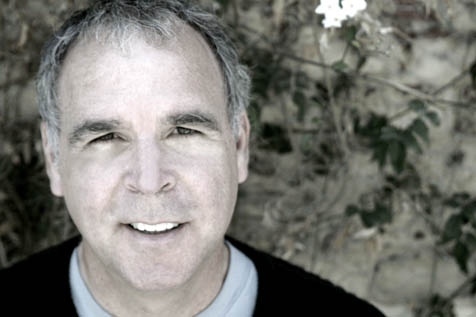Kenny Edwards Maintains the Mystery
The Stamp of Authority

The term “musical legend” is applied far too liberally these days. And the irony is, of course, that those who are truly deserving of such accolades tend to be the least comfortable with embracing them. Kenny Edwards has been making considerable music since the mid ’60s. Since starting out in the Stone Poneys with Linda Ronstadt, Edwards has collaborated and played with the likes of Don Henley, Stevie Nicks, Warren Zevon, and even Ringo Starr. But perhaps the most revealing impression he has made to date has been on his one-and-only self-titled solo offering. And while Santa Barbara has enjoyed seeing him accompany everyone from Glen Phillips to Headless Household in the past few months, when Edwards takes to the stage of the Santa Barbara Songwriters Showcase this week, we will once again be afforded the chance to see Edwards go it solo. And it will no doubt be an experience that will live long in the growing legend of the burgeoning series.
You live a musically diverse existence. In the last month you were Natalie D-Napoleon’s guitarist, joined Headless Household for its Christmas spectacular, and even found time for a solo show. How does wearing so many musical hats fare with you? Playing with other people is a little more difficult just because when I’m playing I don’t know their music as well, so I have to really pay attention. The really attentive responding to another artist is something that I am very comfortable with; but it takes a lot of energy and attention to do that. It’s a side of my music that I have seriously developed over the years though, because I actually started out as a sideman.
You have been playing professionally for more than 30 years, but it was only recently that you released your first solo album. Why so long? I always felt like a bit of an imposter as a songwriter. I worked a lot as a musician and an arranger and as a record producer, but, especially lyric-wise, I wasn’t very developed as a songwriter, and it takes time and attention to do that. In the ’90s I ended up with a publishing deal, so I had to learn how to write songs in a hurry and made my living from that. I started off writing with other people and I started to feel more comfortable and, the next thing I knew, I had a bunch of songs that no one else wanted to record, so I thought I would record them.
Your first musical undertaking was Stone Poneys with Linda Ronstadt, where you enjoyed a good deal of success straight away. Talk me through your musical evolution. I was working at McCabe’s Guitar Shop just out of school and I met Bobby Kimmel and he told me about this great female singer from Arizona and suggested that we start a band. It all seemed so easy back then. There were not that many people doing it and, after a couple of rehearsals, we went in to the record company and they signed us. It was as simple as that really. Linda was so compelling-young and beautiful and a great singer-and we played pretty good. That was what opened the door.
So what was it like being a central part of it all when the world really took notice of Linda Ronstadt? We did it for so long that it was more like a family thing. So there wasn’t any sense of, “Wow, I’m playing with Linda Ronstadt!” And it evolved so naturally, too. When we started out we were playing in clubs the size of SOhO-100- or 200-seat rooms-and every now and then there would come a city where she had a bigger following, and we would play to 500 or 600 people. Occasionally, we would open for someone like Humble Pie in some huge arena, but the next night we’d be straight back to a small club in Nashville.
At what point did things take off? At the end of that tour she made Heart Like a Wheel and had three number-one singles, and all of a sudden everything changed. We went from those small clubs into theaters and stadiums.
The dynamics of taking to the stage in a stadium must have been very different from playing in a small club. It is quite different. It’s almost like the difference between being a stage actor and a film actor. Film actors don’t do a great deal because, when your face is 50 feet high even a little lip curl says so much, whereas a stage actor has to get the message across to the people in the very back row. That is when I first “got” Led Zeppelin-those guys understood big venues better than anyone in the world. They painted in these big, cartoon-like gestures with very simple, yet dynamic, arrangements. Whereas the little textures of a bluegrass band gets washed away in the air-conditioning of those buildings.
I get the sense that a big part of music for you is the chance for social exploration and adventure. I love playing with people and responding to stuff and even having other people respond to what I’m doing. And I’m really enjoying this stage of my career because of that. I don’t have the burden of trying to work my way up through the hierarchy of the system. I’ve been around long enough that I have a certain amount of entry, so I can play around with other people and can also do my own thing at will. And I have the same excitement now that I did when I first got into music. The mystery of it all is back.
4•1•1
Kenny Edwards headlines 2008’s inaugural Santa Barbara Songwriter Showcase at Jensen’s Mainstage, 2905 De la Vina St., on Wednesday, January 3, at 7:30 p.m. Visit myspace.com/sbsongwritershowcase for details.p>



